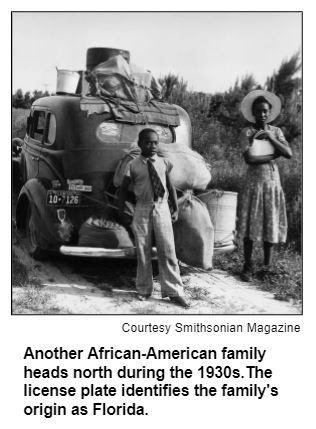Mar 5, 2021
As Hoosier History Live salutes Black History Month, our focus will be on a massive movement of an estimated 6 million people during a span of nearly 60 years. Beginning during the World War I era, African Americans migrated in unprecedented numbers from the South to cities in Northern states, including Indiana.

Some historians use the term Great Migration to apply to the entire span. Others refer to the era from the 1910s to 1940 as the First Great Migration, and describe the 1940s to 1970 movement as the Second Great Migration.
To explore a range of factors and ramifications associated with this consequential migration, Nelson will be joined by Jakobi Williams, Ruth N. Halls Professor in the Department of African American and African Diasporas Studies and the Department of History at Indiana University.
Jakobi, who was born and grew up on the south side of Chicago, will discuss ways that state and local governments in the South attempted to restrict African Americans from leaving. He also will describe the challenges that confronted them in Northern cities after they resettled.

Our guest Jakobi Williams, the author of From the Bullet to the Ballot (University of North Carolina Press, 2013) , suggests the PBS series Eyes on the Prize as a resource for those who want to learn more about the Great Migration.
Describing the beginnings of the Great Migration, the Smithsonian article notes: "To fill the assembly lines, companies began recruiting Black Southerners to work in the steel mills, railroads and factories. Resistance in the South to the loss of cheap Black labor meant that recruiters often had to act in secret or face fines and imprisonment."
The article describes attempts by public officials in the South to retain African Americans "by arresting them at railroad platforms on grounds of 'vagrancy' or tearing up their tickets."
According to the USA Today analysis, the three states with the largest population of African Americans at the end of the 1890s were Georgia, Mississippi and Alabama. "By 1970, New York, Illinois and California had the most African Americans."
The reverse trend that began in the 1970s - the move of African Americans to the South - generally has been led by young, college-educated professionals and retirees, according to several sources.